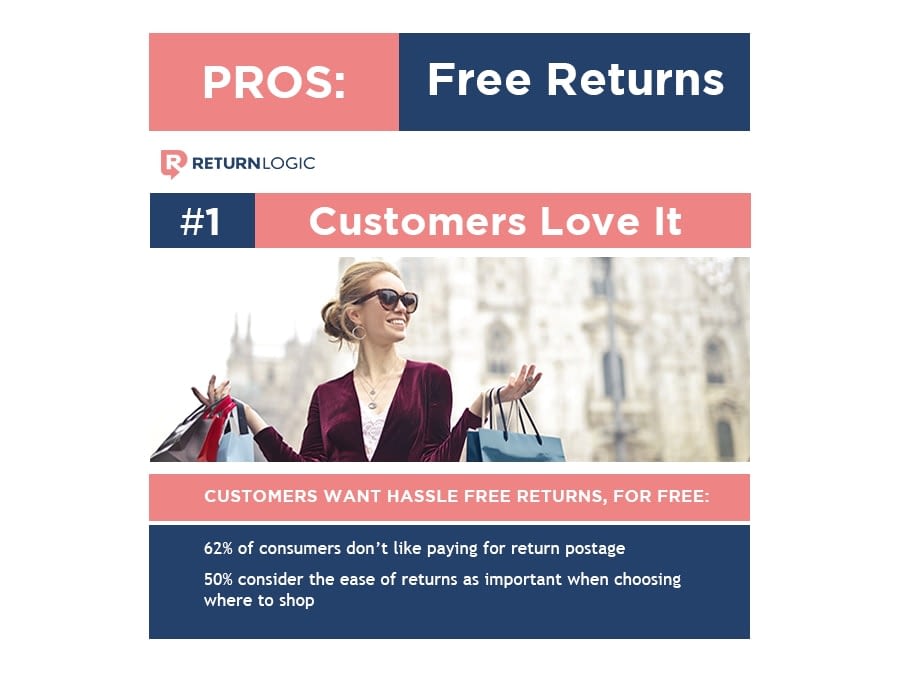How to Tell if Your Ecommerce Business Should Offer Free Return Shipping

Should You Implement a Free Return Shipping Policy?
Some retail experts believe you should offer free return shipping on all returns. Many ecommerce retailers use a free return shipping policy to drive customer satisfaction, and even as a conversion tactic to drive revenue.
It’s easy to see why, with benefits such as reduced cart abandonment, increased conversions, and happier customers.
Free product shipping is so popular and effective that many savvy Shopify retailers are also considering offering free return shipping to boost customer lifetime value and increase purchase rates.
But, are free Shopify returns and exchanges viable for your business?
Here’s what we’ll cover in this post:
- The Pros and Cons of Free Returns & Exchanges
- The Financial Side of Things (+ Free Downloadable Calculator)
- Key Things To Consider When Offering Free Product Return
What are the Pros and Cons of Free Return Shipping?
Free return shipping can give your business a boost when it comes to customer satisfaction, but do the potential benefits outweigh the costs?
Pro #1: Your Customers will Love Your Free Returns Shipping Policy
Ecommerce returns can be a significant roadblock on the way to a smooth and satisfying customer experience. Asking your customers to pay for return postage introduces more friction to an already painful process.
In fact, according to one study— 62% of consumers are frustrated when asked to pay for return postage and packaging.
You can minimize customer frustration by offering free returns and exchanges.
Remember, it’s all about customer retention. By minimizing friction during the returns process, you’re far more likely to re-engage with customers and convert them into repeat purchasers.
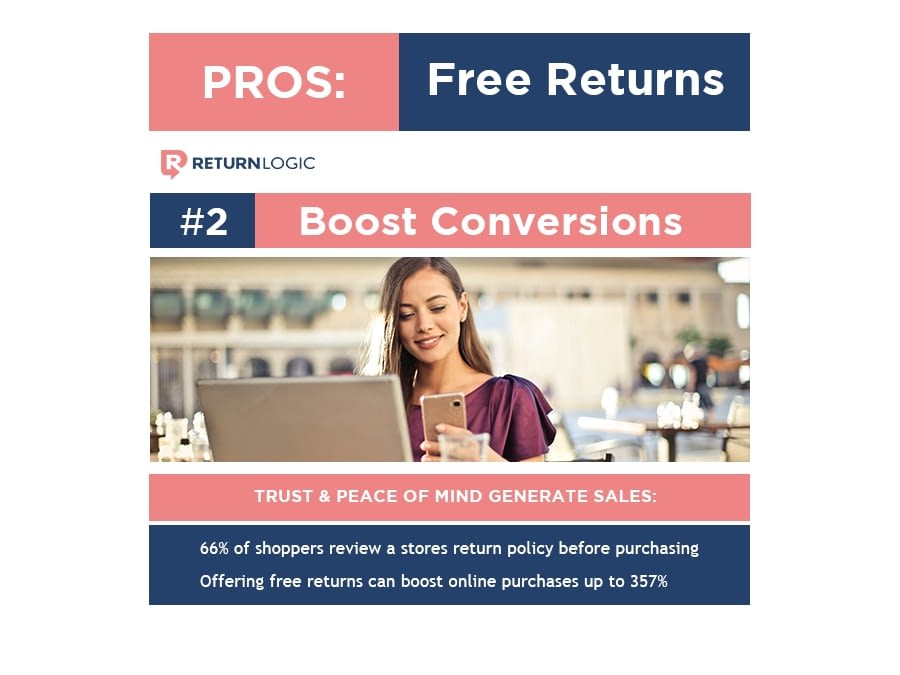 Data Source: Washington and Lee University Study
Data Source: Washington and Lee University Study
Pro #2: Free Product Returns Encourage Conversions & Boost Sales
Ecommerce is a numbers game. And if you’re like most retailers, your conversion rate floats around an average of 1% to 3%.
All those dollars spent on paid ads, influencer marketing, and SEO have a very low yield regarding the number of purchases made by visitors.
To combat low conversion rates, many retailers try to A/B test various elements of their stores. But often overlooked is the return policy.
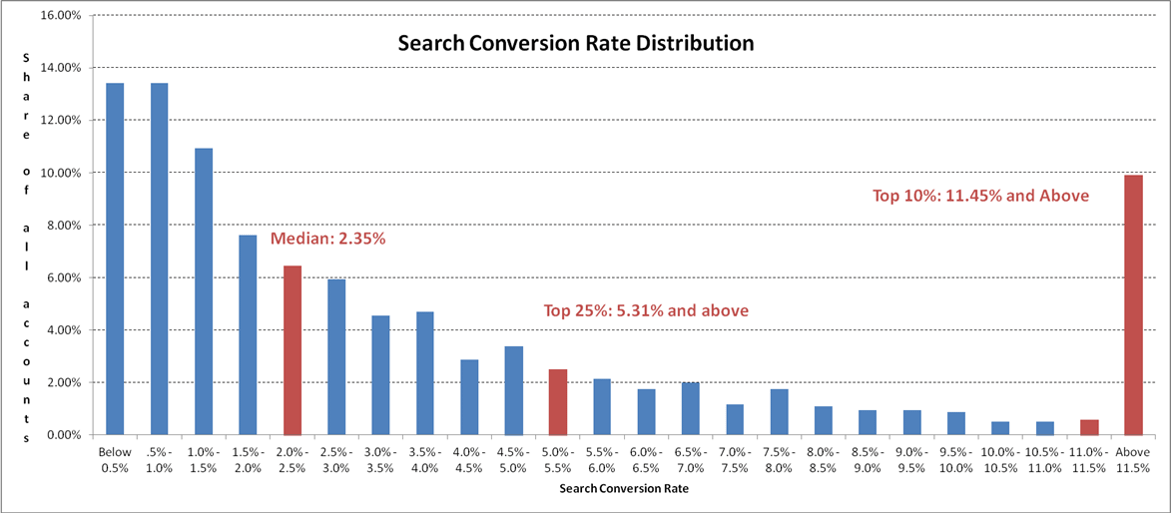
This graph shows a distribution of conversions rates across multiple industries, but ecommerce conversion rates are generally on the lower end of the spectrum (Source: Larry Kim, The WordStream Blog)
You can use free product returns as a conversion optimization strategy for purely psychological reasons:
We’re always looking to be reassured about the decisions we make – especially when it comes to parting ways with our hard-earned cash.
Online shopping is no different. Customers want peace of mind when purchasing a product. They seek validation and financial security in their purchasing decisions.
By offering free return shipping to your customers, you’re sending a reassuring signal. You’re letting them know that even if they make the wrong decision about a product, they can quickly correct it.
So, will this increase in purchase rate because of a free returns policy cause more returns?
The answer will be different for each retailer. Depending on your vertical, target market, and products, your return rate in relation to your purchase rate is bound to differ.
High purchase rates may offset any negative impact product returns have on your bottom line.
Remember, free returns and exchanges are a retention marketing strategy, so advertise your return policy just like you would for free product shipping.
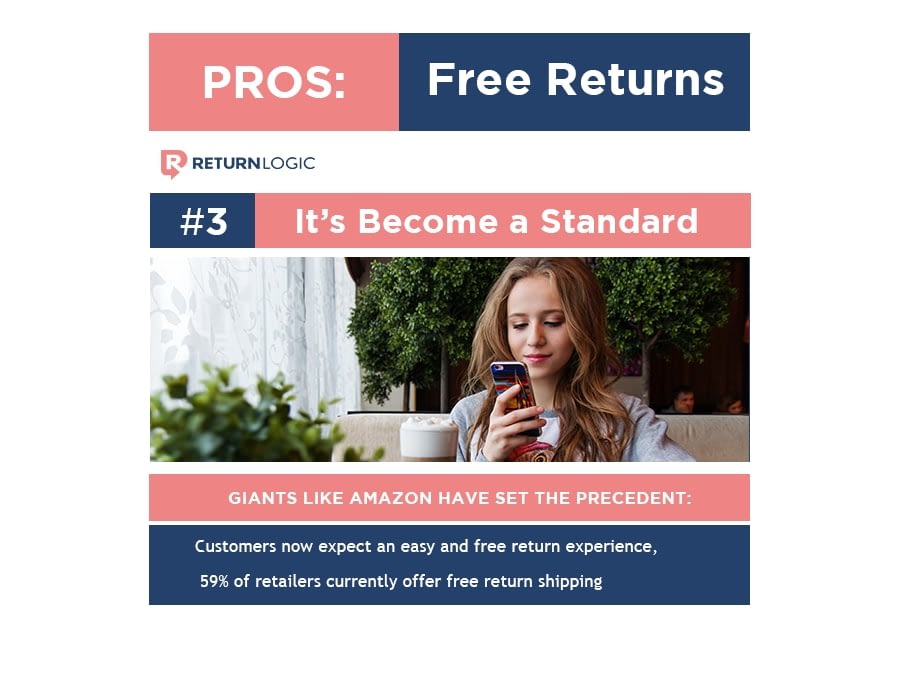
Pro #3: Everybody’s Doing It! Customers Expect Free Returns
Thanks to services like Amazon Prime, consumers not only expect speedy shipping – they expect it for free. The same applies to return shipping.
Free returns and exchanges are becoming a standard throughout ecommerce. In fact, a National Retail Federation study found that about 59% of retailers currently offer free return shipping.
Your business must proactively employ policies like free return shipping to remain competitive in today’s customer-centric retail space.

Pro #4: Offering Free Return Shipping Does Not Have to Be a Comprehensive Policy
When it comes to online returns and exchanges, you don’t need a one-size-fits-all policy. You’ll likely be better off with a fluid return policy tailored to your products, customers, and goals.
Free return shipping doesn’t have to apply to your entire product catalog. By segmenting your return policy to apply to various clusters, you’re protecting yourself against financial loss and return fraud while reaping the benefits of free return shipping.
Here are some ideas of how you can segment your return policy to offer free returns for select products and situations:
- Offer free return shipping for only full price items
- Offer free return shipping during the holiday season
- List items as Final Sale
- Offer different return shipping depending on item category
While a free return policy has numerous benefits, it’s also important to consider some of the disadvantages of free returns before implementing changes.
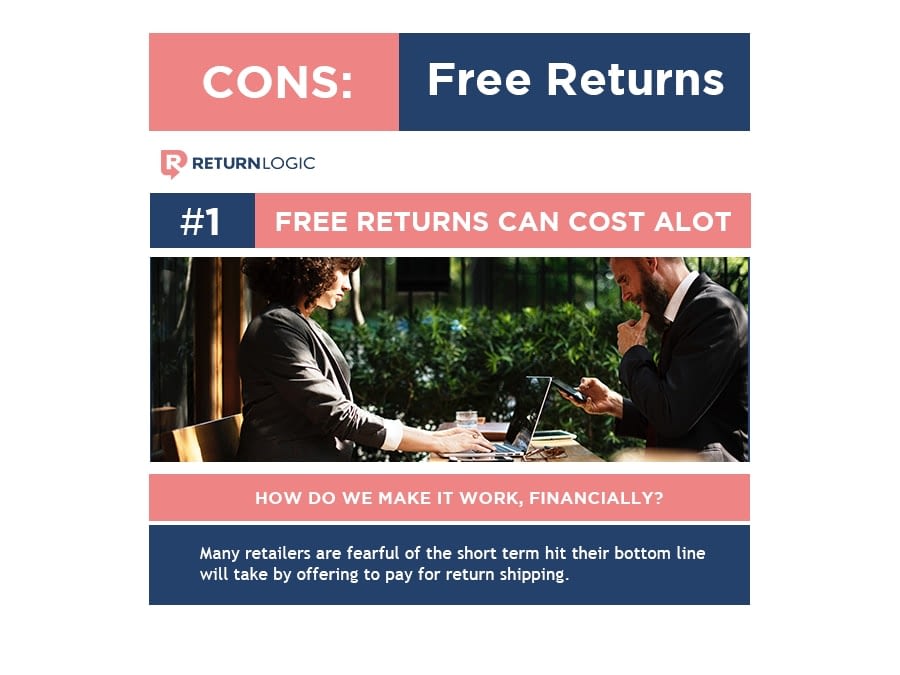
Con #1: Free Return Shipping Costs Cause a Hit to Your Bottom Line
By offering free return shipping, your business is taking on the cost of shipping the product to the customer and paying for return shipping. It’s because of this hit to the overall bottom line that many retailers are wary of free returns.
Depending on your product niche, free return shipping policies can become cost centers very quickly. The cost of shipping a comforter is much higher than that of a dress, so you’ll have to carefully consider which products get the nod for free returns.
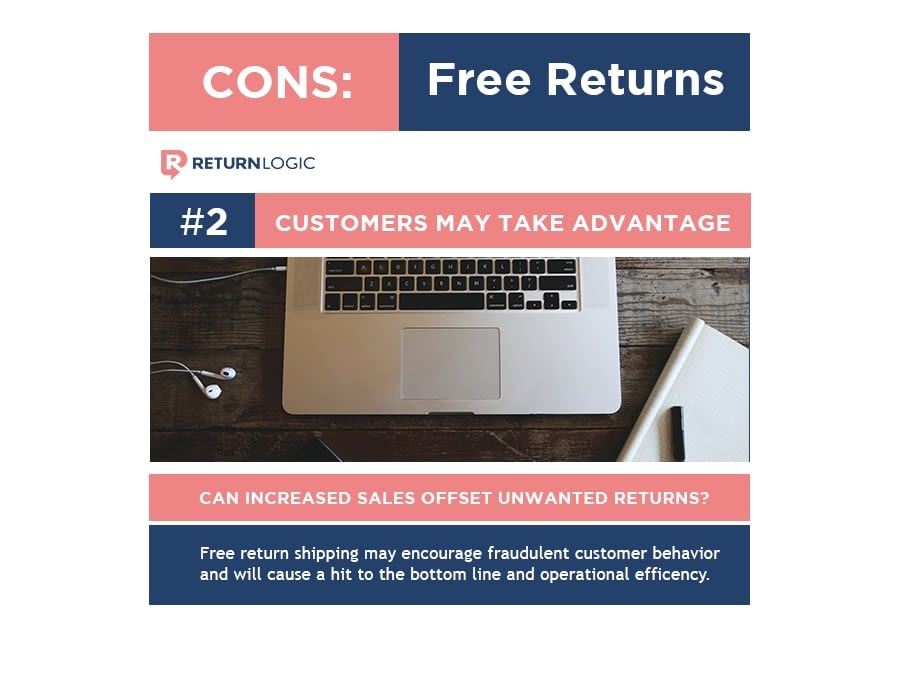
Con #2: Your Customers May Take Advantage
A free return policy can encourage unwanted consumer behaviors like wardrobing.
Free product returns could get costly if these behaviors aren’t offset by increased sales.
With smart return management software, you can monitor for suspicious behavior, such as shoppers purchasing three sizes of the same product and returning two of them.
Are Free Returns Profitable for Your Business? (Free Calculator)
By now, you’ve probably figured out that if implemented correctly, the benefits of a free returns policy generally displace the negative side effects it may cause.
Now let’s figure out the finances behind this strategy. There’s some math involved here, but if you’re not in the mood for number crunching— don’t worry!
We made this quick and easy Excel spreadsheet to estimate the impact free returns and exchanges will have on your revenue and growth.
Important things you’ll need to know:
To begin to understand how changing your return policy may affect your revenue, you need to know a few things:
- Your average monthly revenue (Current Revenue)
- How much you expect sales to increase as a result of free returns (Increased Sales)
- How much you will be paying (on average) for a returned item (Shipping Costs)
- Estimated labor costs to process one return (Labor Costs)
- Average product value
- Your current number of monthly returns
- How much you expect returns to increase by as a result of free returns
Now, for the fun part:
The estimation formula for calculating the revenue generated (lift) by implementing free returns is fairly simple.
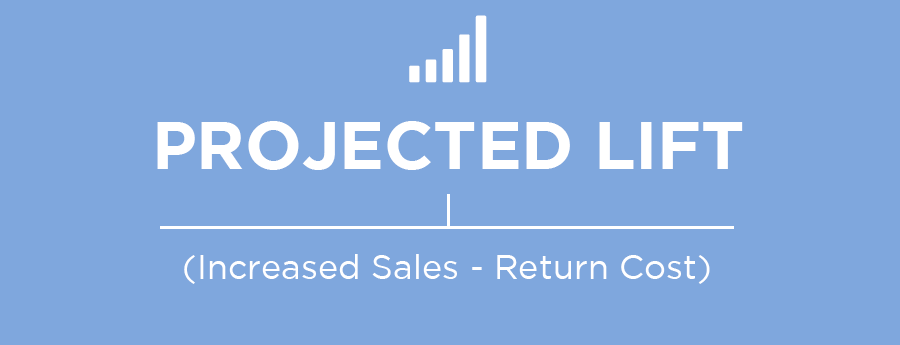
The tricky part is figuring out all the numbers that make this quick calculation work, so let’s break it down.
NOTE: While you can use this estimation method using annual figures, we recommend using monthly data.
Step #1: Find the revenue growth with free returns implemented
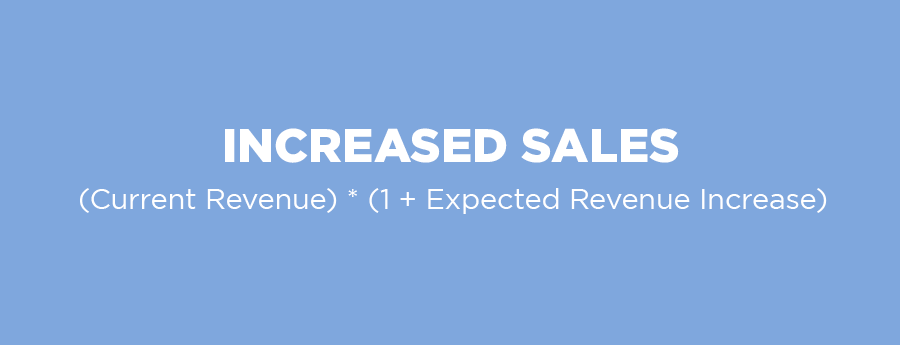
NOTE: Expected Revenue Increase is the percent by which you think revenue will increase and must be represented with a decimal.
The number you get after performing this calculation will give you the value for your potential increase in sales.
Step #2: Find the total cost of products returns for your business
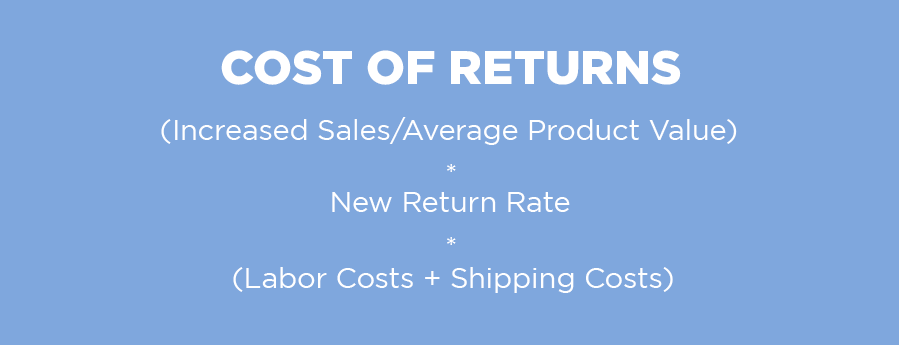
By dividing your increased sales revenue by your average product value, you can roughly find the number of expected product sales.
>> CLICK HERE TO DOWNLOAD THE FREE CALCULATOR <<
Step #3: Calculate the New Return Rate
Now we have the number of product sales, we need to figure out our new return rate with free returns implemented:
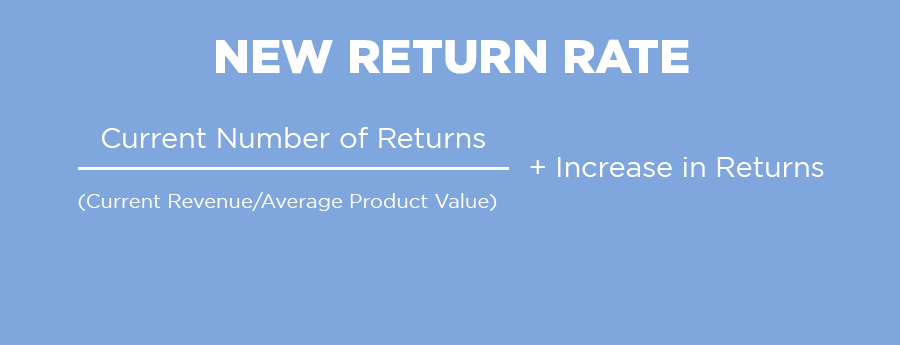
So, how do you anticipate the percent increase in returns?
Well, the answer isn’t concrete and will depend on the retailer and their product return activity.
To help explain this variance, we put together this graph of Increased Sales vs Returns:
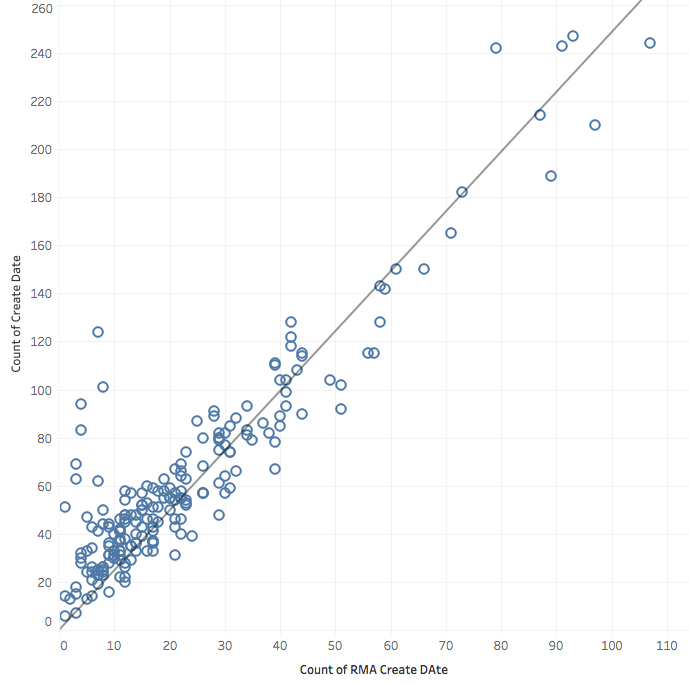

As you can see, the number of returns scales linearly as the number of orders increases (which in turn, increases the revenue).
This trend line isn’t definitive for every ecommerce store – your mileage may vary depending on several variables. But generally, if you can understand what your specific trend line might look like, you can make an educated guess on how returns will increase as your sales increase.
After you figure out the percent by which you think your returns will increase, plug that number into the formula and find your new return rate.
Next, we multiply the number from our previous calculation by labor and shipping costs to arrive at the total physical cost of returns for our next month.
TIP: You can calculate labor cost by breaking down the time it takes an employee to process a return and multiplying it by their hourly rate.
For example, if it takes 20 minutes to fully process a return by an employee making to $15/hr, you’re losing $5 for every return to labor costs.
Putting it all together:
Now that we have the numbers, we can subtract the cost of returns from our increased sales figures to obtain our final revenue. That gives us an estimate of how much money we can expect to make by offering free returns and exchanges.
Here’s what the numbers look like with our Excel-based calculator:

>> Click Here to Download the Free Calculator <<
3 Key Considerations when Offering Free Returns and Exchanges
Free returns and exchanges can be a great marketing tool for your business. But to be effective, there are some things to consider before implementing a free return policy.
1. Split Your Exchanges and Return Policy
If you’re still opposed to the idea of free ecommerce return shipping, keep in mind that one size doesn’t have to fit all.
Instead of offering free returns, you can split your return policy into product returns and product exchanges.
By offering free exchanges and paid refunds, you can minimize the risk to your bottom line while still offering customers peace of mind.
2. Special Events and Seasons
Remember to consider peak purchasing times like Black Friday and the holiday season, as these events can cause large spikes of traffic and purchases on your website.
It’s important to find the correct balance between customer-centric and financially conscious, so take a look at your order history and revenue for popular events in the past and decide if free return shipping is needed.
3. Sales and Discounts
To prevent your bottom line from taking a substantial hit because of returns, avoid offering free return shipping on items that have been marked down.
You may still be able to offer returns on discounted items instead of marking them to final sale. Doing so will deter customers from returning discounted products while still maintaining a level of customer satisfaction.
Putting the Strategy into Action
Returns are an opportunity to engage frustrated buyers. It’s a chance to salvage the current sale and invest in the lifetime value of the customer.
However, investing in free return shipping is only helpful if you have the right system in place to measure the impact. That is where returns management software comes in.
